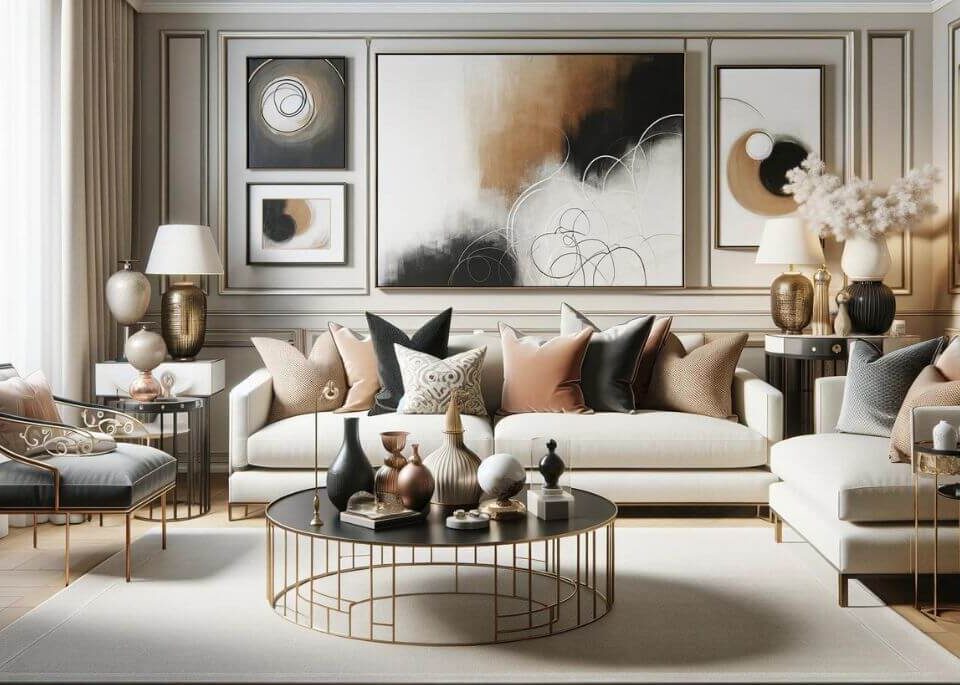
Understanding Scale and Proportion in Interior Design: The Secrets to Harmonious Spaces
August 5, 2023
The Elements of Design: The Building Blocks of Interior Spaces
August 8, 2023Applying the Principles of Design in Your Home
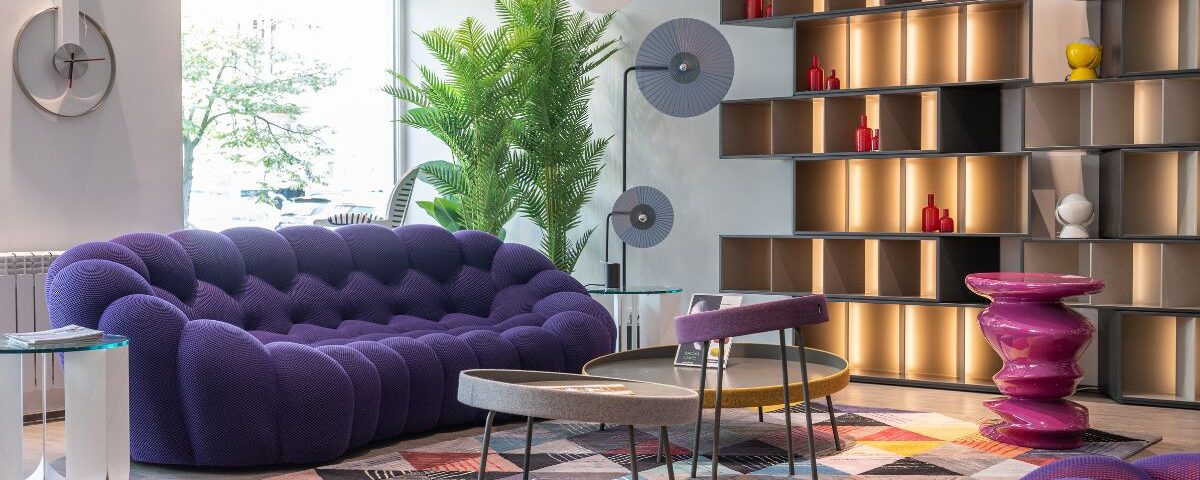
When it comes to designing your home, understanding the Principles of Design is essential. These rules guide the placement and arrangement of elements in a space to create aesthetically pleasing and functional interiors. Let’s embark on this enlightening journey to explore these principles and how they can transform your home into a beautiful, harmonious space that reflects your unique personality.
Table of Contents
Understanding the Principles of Design
The Importance of Design Principles
Just as the laws of physics govern the world around us, the Principles of Design are the laws of designing any layout. These principles guide us on how to combine and arrange various design elements, ensuring our spaces are not only attractive but also functional and livable. A well-designed space can affect how we live, work, and feel within an environment.
Key Principles of Design
The primary Principles of Design include balance, rhythm, contrast, emphasis, and unity. Each principle plays a crucial role in the overall effect of a design, influencing how we perceive and interact with the space.
Breaking Down the Principles of Design
Balance
In the design world, balance is about ensuring that no one part of a design overpowers the others. This equilibrium can be achieved in different ways:
Symmetrical Balance
This type of balance is achieved by mirroring elements on either side of an axis. It often lends a formal, orderly look to spaces.
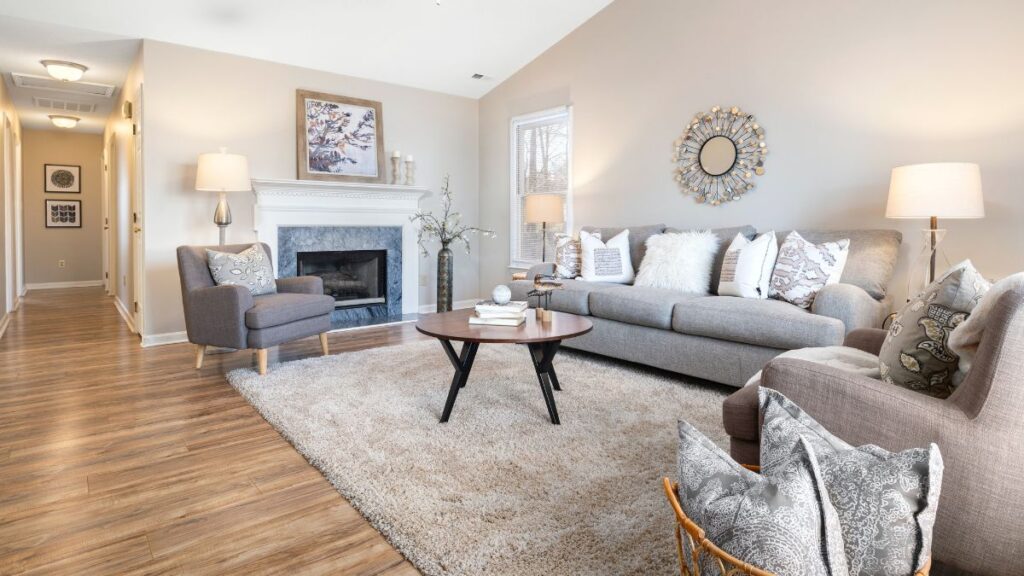
Asymmetrical Balance
Asymmetrical balance, on the other hand, involves different elements that have equal visual weight or eye attraction. It’s a bit more dynamic and can add interest and movement to a space.
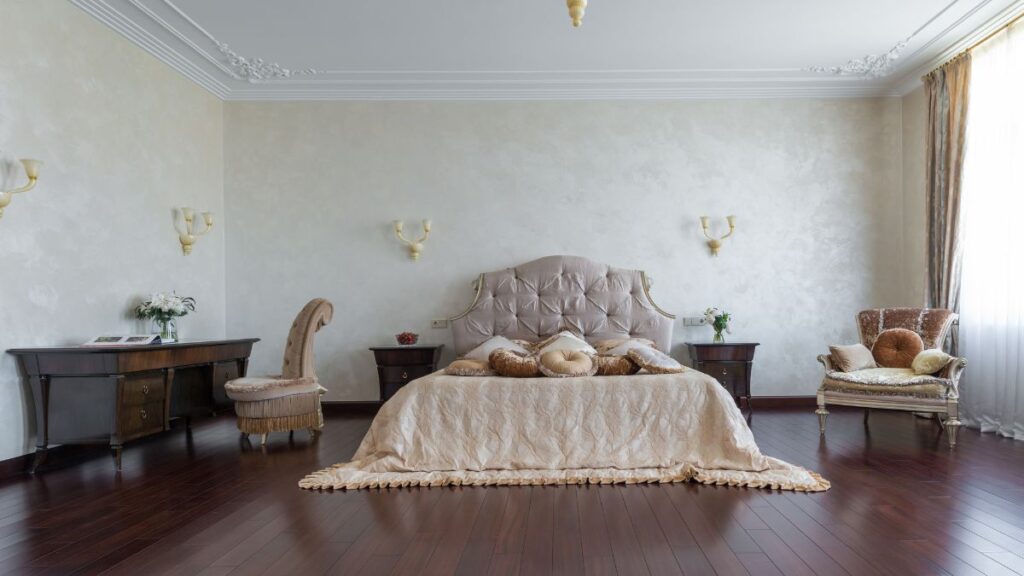
Radial Balance
Radial balance is achieved when elements are arranged around a central point. It’s common in circular tables or dome shaped rooms.
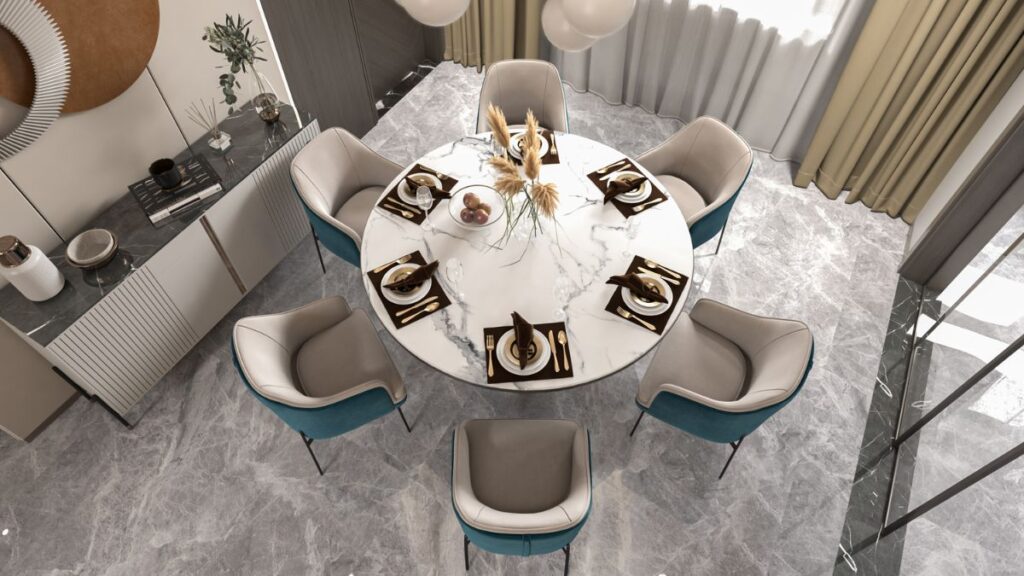
Rhythm
Rhythm in design refers to the visual tempo or beat. It can be achieved through repetition, alternation, or progression of elements.
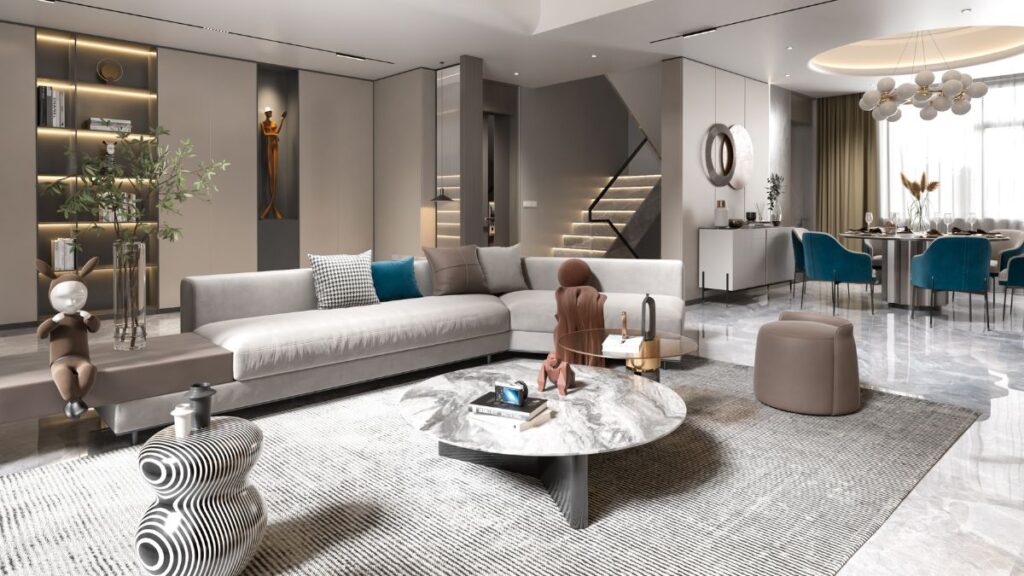
Contrast
Contrast helps highlight certain elements in the space, creating a focal point. It can be achieved using different shapes, colors or textures.
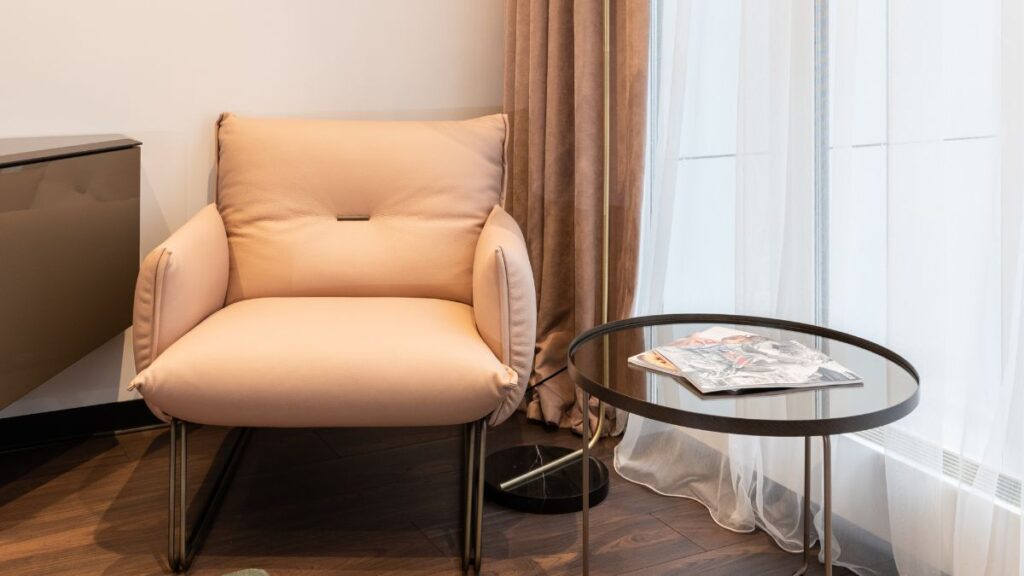
Emphasis
Emphasis in design refers to developing points of interest to guide the viewer’s eye. It can be achieved by contrasting size, color, shape or texture.
Unity
Unity implies that all elements of a design look like they belong together. It’s achieved by repeating certain elements or colors throughout the space.
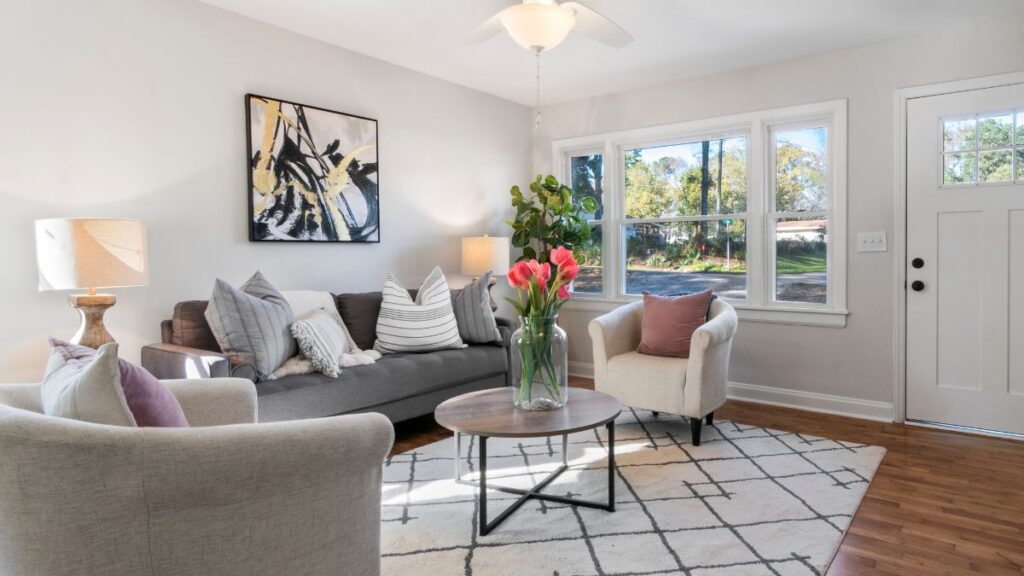
Incorporating the Principles of Design in Your Home
Now that we’ve explored the Principles of Design let’s delve into practical ways to apply them in your home.
How to Apply Balance in Home Design
Whether you’re arranging furniture or hanging wall art, consider how each element contributes to the balance of the room. For a symmetrical balance, you could place matching lamps on either side of your sofa. For an asymmetrical balance, you might juxtapose a large piece of furniture with a collection of smaller items.
Establishing Rhythm in Your Spaces
Rhythm can be established by repeating colors, shapes, or patterns in your decor. For instance, you might choose a color from your rug and repeat it in your cushions, artwork and accessories.
Using Contrast Effectively
Contrast can be used to draw attention to a particular feature or area within a room. For instance, if you have a neutral palette, a boldly colored accent chair will stand out.
Emphasizing Key Elements
Decide what you want the focal point of your room to be, and design around that. It could be an architectural feature, a piece of art or a unique piece of furniture.
Achieving Unity in Design
Ensure that the style, colors, and shapes within your space are harmonious. This could mean choosing furniture of a similar style or repeating a particular shape or color in your decor.
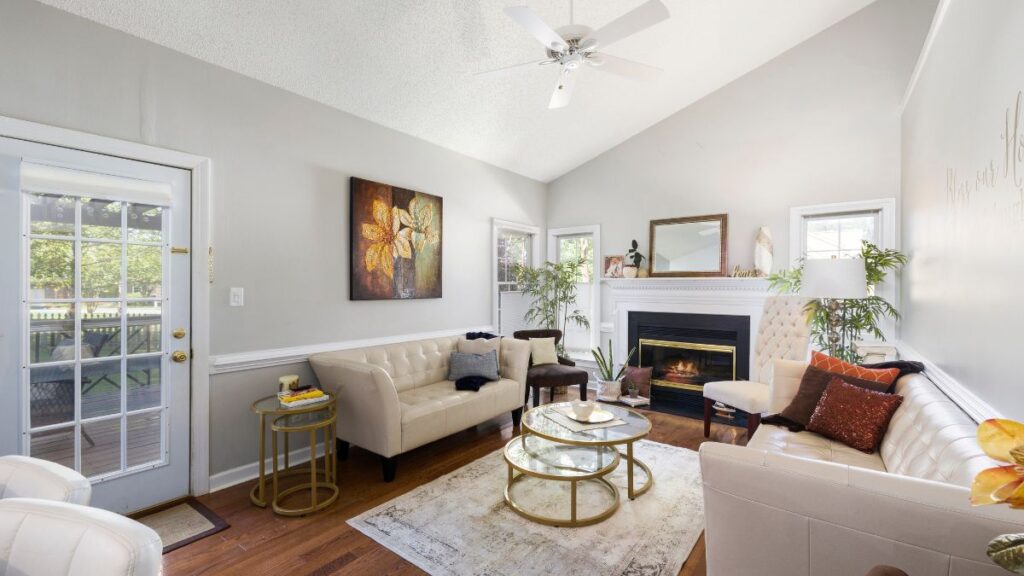
Key Takeaways: Applying the Principles of Design for Harmonious Interiors
- Each principle of design (balance, rhythm, contrast, emphasis, and unity) offers specific guidance on creating visually appealing and functional spaces.
- Balance, whether symmetrical or asymmetrical, ensures visual stability and organization, while rhythm brings consistency through repeating design elements.
- Contrast draws attention to specific features, creating focal points and adding visual intrigue.
- Emphasis and unity work hand-in-hand to create coherent designs that feel intentional, comfortable, and uniquely yours.
Conclusion
Understanding and implementing the Principles of Design can make a significant difference in how your home looks and feels. By considering balance, rhythm, contrast, emphasis, and unity, you can create a space that’s not only beautiful, but also functional and comfortable. And remember, while these principles provide helpful guidance, the best design is one that reflects your personal style and meets your unique needs.
FAQs
1. How does radial balance fit into interior design?
Radial balance involves arranging elements around a central point. This layout is common with circular tables surrounded by evenly placed chairs, creating a visually pleasing and organized setup.
2. Can I combine different design principles in one room?
Absolutely. In fact, a well-designed room will often incorporate multiple design principles. For example, you might use contrast to create a focal point, then balance this with other elements in the room to maintain harmony.
3. How can I create balance in a room without it becoming boring?
While symmetrical balance can sometimes feel static, you can avoid this by introducing variety within the symmetrical framework. For instance, two different artworks of the same size on either side of your bed can maintain balance while adding interest.
4. How do I choose a focal point in my room?
Your focal point could be anything from a fireplace to a piece of art or a unique piece of furniture. Think about what you want to highlight and design around that.
5. How can I create rhythm in my room?
Rhythm can be achieved by repeating certain elements such as color, shape, or pattern. This could be as simple as repeating the color of your curtains in your cushions and rug, or using a recurring motif in your upholstery and artwork.
6. Can I use contrasting colors in my room?
Yes, contrasting colors can add vibrancy to a space. Just remember to balance them with some neutral elements to avoid overwhelming the eye.
7. Can I combine different design principles in one room?
Yes, combining design principles often enhances a room’s appeal. For instance, you can create emphasis using contrast to highlight a focal point, while simultaneously using balance to harmonize the other elements. This way, multiple principles work together to create a cohesive, engaging design.
8. How can I create balance in a room without making it feel dull?
Symmetrical balance can sometimes feel static, but you can add variety by incorporating different yet similarly sized objects. For example, use two different paintings of the same size on either side of a bed to achieve balance with an element of interest.
9. How do I identify the focal point in my room?
Focal points are typically unique or visually striking features like a fireplace, artwork, or architectural detail. Decide what you’d like to emphasize and arrange other elements around it to naturally draw the eye.
10. How can I achieve rhythm in my interior spaces?
Rhythm involves repeating design elements like color, shape, or pattern. For instance, mirror the color of your curtains in your cushions and rug, or repeat a motif across your upholstery and art pieces.
11. Is it advisable to use contrasting colors in a room?
Absolutely! Contrasting colors bring vibrancy to a room. Just ensure that the contrasts are balanced with neutral elements so the space doesn’t feel overwhelming.
12. What are some practical ways to incorporate unity in design?
Achieve unity by repeating colors or shapes throughout the space, and choosing furniture of similar styles. If you have a particular theme, be consistent in its application across different elements.
13. What are some effective ways to create emphasis in a room?
Identify the room’s focal point, such as an architectural feature or piece of art, and arrange the layout to naturally guide attention there. Use contrasting size, shape, or color to highlight it.
14. Are asymmetrical designs suitable for living rooms?
Yes, asymmetrical balance adds interest to living rooms without making them feel too formal. Pair mismatched elements of similar visual weight to achieve a dynamic yet balanced look.
15. How can I maintain harmony across multiple rooms in my home?
Consistency is key. Select a unified theme or color scheme and incorporate elements of it throughout each room. This ensures a smooth visual transition from one space to the next.
Delve into the psychology of colors and their impact on ambiance and emotions with our article on Color Theory in Interior Design: Creating Mood with Color, guiding you to wield the perfect palette for your dream spaces.

